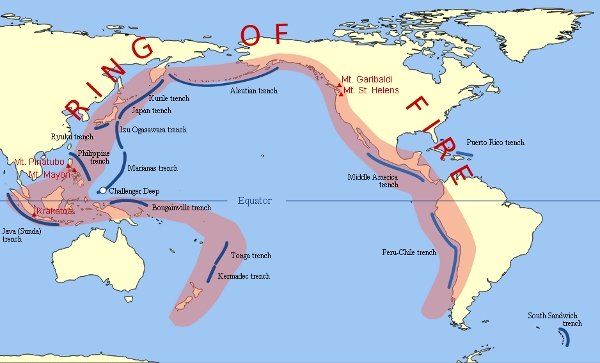
The Philippine archipelago lies along the Pacific Ring of Fire, a region around the Pacific Ocean where massive fault lines and several volcanoes are located. Because of this, the country experiences frequent earthquakes. Throughout recorded history, scores of lives and billions of pesos worth of property have been destroyed by tremors across the country.
The following is a list of the top 3 deadliest and most destructive earthquakes written in history (or since the 1600s):
3. 1645 Luzon Earthquake – 600 deaths (Spaniards only)
At around 8:00 pm on November 30, 1645, a magnitude 7.5 earthquake rocked Manila and the rest of Central Luzon, with its epicenter determined to be at Nueva Ecija. Sometimes considered as the “most terrible” of all quakes in the country, it caused damage to houses and buildings in a span of minutes. However, at the time, only the Spaniards were accounted for so that the fatalities were listed only at 600. Had the Filipinos also been included in the count, it could easily surpass the other quakes to move up to the top spot.
2. 1990 Luzon Earthquake – 1,621 deaths
At 4:26 pm on July 16, 1990, a magnitude 7.8 quake hit Central Luzon and Cordillera region, heavily damaging properties and various buildings. The epicenter was determined at 15° 42′ N and 121° 7′ E near Rizal, Nueva Ecija but the highest number of casualties were recorded at Cabanatuan City and Baguio City. A total of 1,621 people died in this tragedy. There were some survivors who were miraculously rescued alive even after 3 weeks of being buried under the rubbles.
1. 1976 Moro Gulf Earthquake and Tsunami – up to 8,000 deaths
Certainly the deadliest earthquake in terms of casualties, up to 8,000 deaths were reported during the 1976 Moro Gulf Earthquake and subsequent Tsunami. Shortly after midnight on August 16, 1976, Mindanao and Borneo were rocked by a magnitude 8.0 earthquake whose epicenter was set beneath the Celebes Sea. Shortly afterwards, a tsunami wiped out seaside villages whose people were mostly asleep and unable to escape.
Other strong and deadly earthquakes have also been recorded, with an intensity 10 quake felt in Luzon from July 14 to 24, 1880 but the number of actual casualties and fatalities remain unknown. In the future, it is possible for the country to experience other deadly tremors. It is best for everyone to stay alert and remember what to do during an earthquake: duck, cover, and hold on!




















0 Comments